In the first four articles on electrostatics, we learned about electric charges, electric charge distributions, electric field and Coulomb’s law of electric force. We became to know that the charges of the same sign will go away and opposite charges will come closer due to electrostatic interactions. The paths through which the charges move due to the electrostatic force are the electric field lines or electric lines of force. In this fifth article on electrostatics, I’m going to discuss the definition and properties of electric field lines with diagrams.
Contents of this article:
- Definition of electric field lines
- Physical significance of electric field lines
- Properties of electric field lines
- Drawing of electric field lines
- Why the two field lines do not intersect each other?
Definition of electric field lines
If we place a free unit positive charge in an electric field it will move due to electric force on the electric charge. If we join the different positions of the charge during its motion, we will get a line. This line is called the electric field line. One can observe the infinite number of field lines depending upon the initial positions of the charge. One cannot see the field lines with the naked eye because these lines are imaginary lines. The other name of the electric field line is the electric line of force.
The physical significance of the electric line of force
The physical significance of an electric field line is that the tangent at any point on the electric field line gives the direction of the electric field (E) at that point. Also, we can have some idea of the strength of electrostatic force by observing the number of electric field lines present there.
Properties of electric field lines
The properties of electric field lines are as followings –
- Electric field lines are imaginary lines.
- Field lines are continuous lines.
- The tangent at any point on the electric field line gives the direction of the electric field at that point.
- Electric field lines start from the positive charge and end at the negative charge. That means electric field lines for a positive charge are outward and for a negative charge they are inward.
- No field lines intersect each other.
- Electric field lines intersect equipotential surfaces perpendicularly.
- These can be straight or curved lines. These lines are parallel straight lines for a uniform electric field.
- Electric field lines vanish inside the conductor. Because the electric field inside a conductor is zero.
Diagram of electric field lines
Electric field lines due to a single positive charge
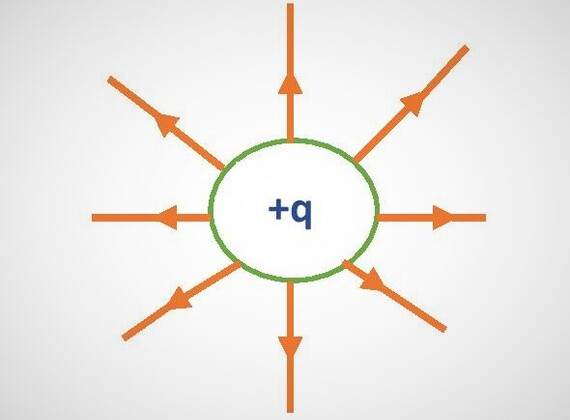
- Electric Field lines are outward from a single positive charge.
- They can extend up to an infinite distance from the charge.
- The density of electric field lines depends on the magnitude of the electric charge. Electric lines of forces will be denser for an electric charge of greater magnitude.
Electric field lines due to a single negative charge
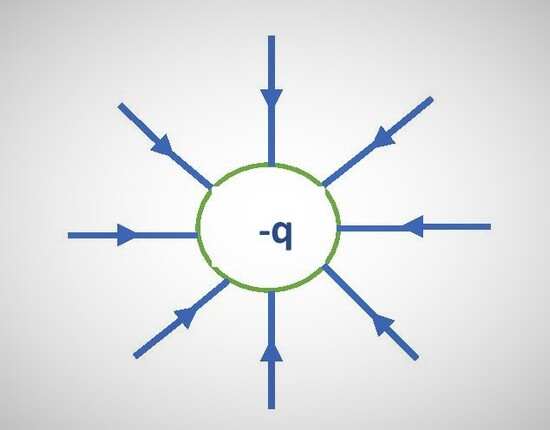
- The Electric Field lines are inward for a single negative charge.
- These field lines start at infinite and end at this negative charge.
Electric field lines for an electric dipole
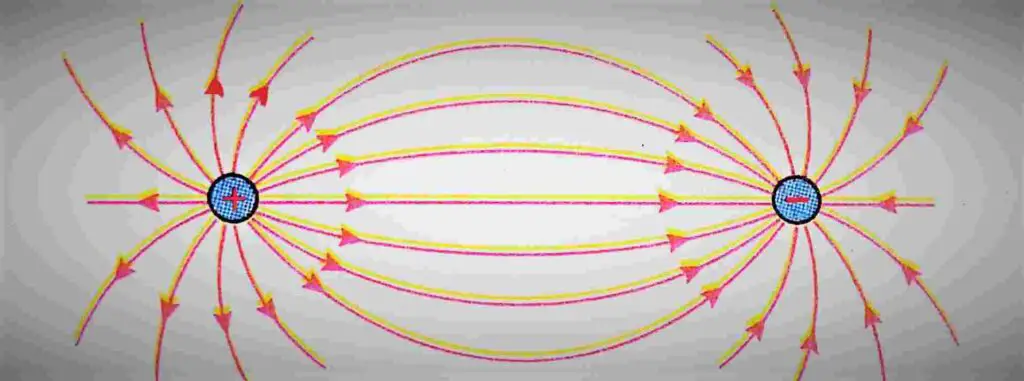
The above figure shows the electric field lines for an electric dipole. Here are some properties of electric field lines due to an electric dipole –
- Electric field lines start from the positive charge and end at the negative charge.
- The density of field lines is maximum at the poles i.e. near the charges. Hence the electric field has greater strength near the charges.
- The strength of the electric field is the least at a point in the middle of the charges.
Electric field lines for two positive charge
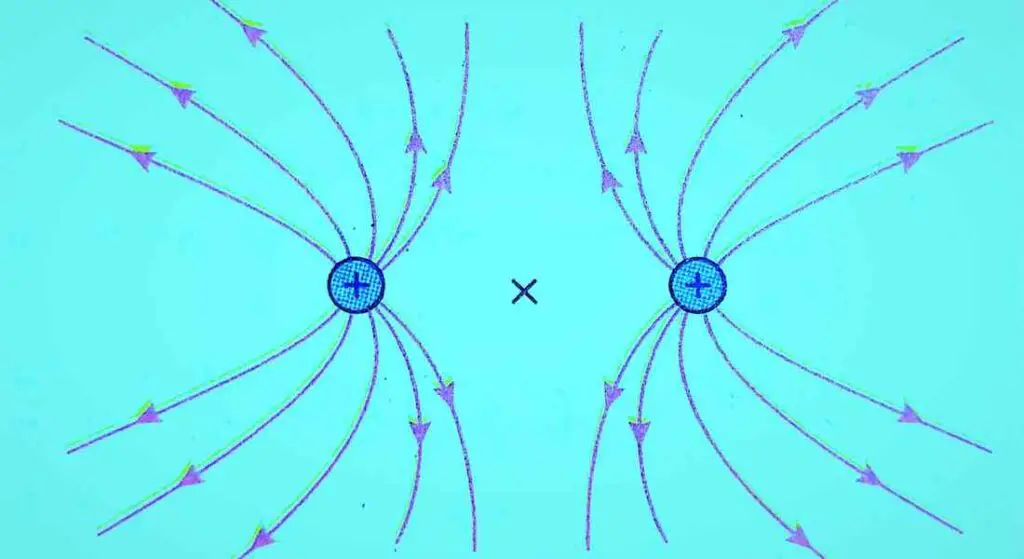
- Electric field lines are outward for both charges and extended up to infinite.
- There are no field lines in the middle of the line joining the charges. Hence the net electric field at that point is zero.
Drawing of Electric field lines due to two negative charge
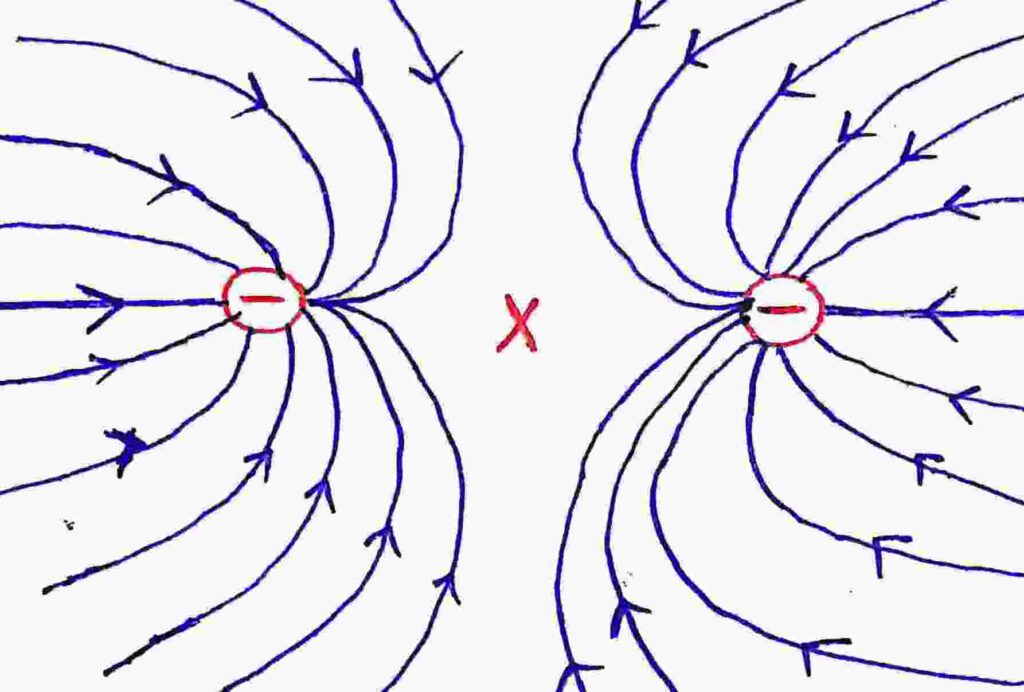
Electric field lines for two negative charges are the same as that for two positive charges. But all the field lines for both charges are inward in this case.
Why the electric field lines do not intersect each other?
We already know that the tangent at any point on the electric field line gives the direction of the electric field at that point. Now if two field lines intersect each other then we will get two tangents at the intersection point due to these two lines. So, in this case, two directions of the electric field can be observed at a single point. But the electric field at a point cannot have two directions. Therefore, two field lines cannot intersect each other.
This is all from this article on the properties of electric lines of force and their drawing for various charge configurations. If you have any doubts on this topic you can ask me in the comment section. Click on the Next Article button below to read the next article on Electric Flux and Gauss’s Law.
Thank you!
Related posts:
- Properties of Magnetic field lines
- Electric field and electric field Intensity
- Coulomb’s law of electrostatics
- Gauss’s law of electrostatics
Comments are closed.